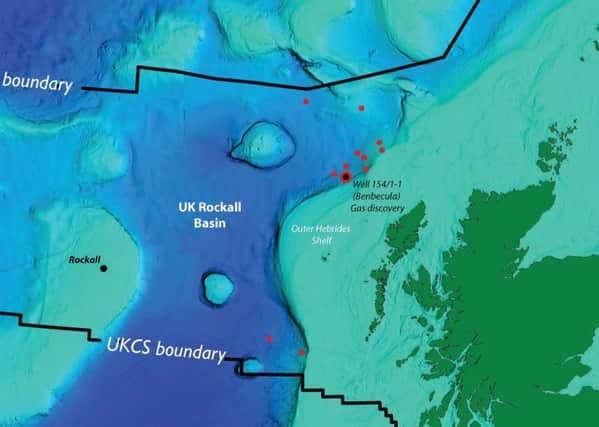Untapped Hebridean gas reserves in Rockall Basin


A geological analysis of the Rockall area, some 240 miles west of North Uist, gas revealed previously unknown insights that could lead to new oil and gas discoveries in the UK Continental Shelf (UKCS).
By studying the latest seismic data supplied by the Oil and Gas Authority (OGA) and employing lessons learned elsewhere in the UKCS, geologists from the University of Aberdeen have gained a clearer understanding of the Rockall Basin and identified potential areas for future exploration activity.
Advertisement
Hide AdAdvertisement
Hide AdPrevious attempts to find hydrocarbons in Rockall have been largely unsuccessful, with only one gas discovery out of 12 wells drilled. Those behind the study believe that misconceptions regarding the character of the Basin - as well as challenging weather conditions and a lack of supporting infrastructure due to its remoteness - have hampered these exploration efforts.
Dr Nick Schofield from the University’s Department of Geology and Petroleum Geology led the analysis, which has been funded by a £250,000 award from the Oil and Gas Authority (OGA) as part of its Frontier Basins Research effort to boost future exploration in the UKCS.
Dr Schofield said: “The Rockall Basin is one of the most challenging environments on Earth when it comes to hydrocarbon exploration, but our analysis has revealed that one of the barriers to success may have been a misunderstanding of the subsurface geology.
“By analysing seismic data provided by the OGA and Petroleum Geo-Services (PGS), and using what we have learned through our work in the Faroe-Shetland Basin, we found that the character of areas where operators hoped to find oil may have been misleading.”
Advertisement
Hide AdAdvertisement
Hide AdDr Schofield explained that one issue is the previous targeting of so-called ‘bumps’ in the sub-surface, commonly referred to in the industry as a ‘four-way closure’, where it is hoped oil has been trapped.
“In the case of Rockall, these bumps, in many cases, appear to have actually been caused by volcanic intrusions in the sub-surface,” he said.